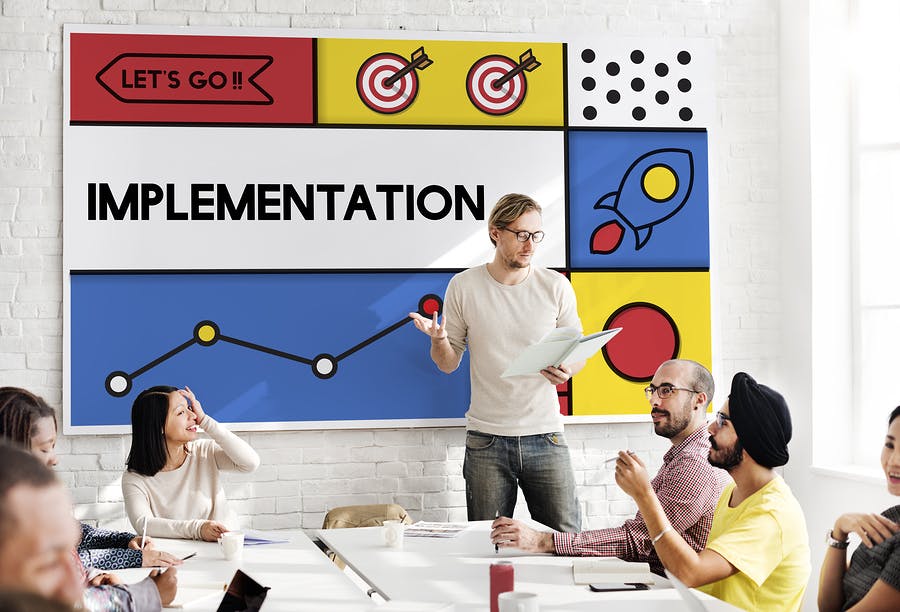Organizations are often siloed by function – separate departments handle human resources, IT, facilities and the other services on which employees have come to rely. Without a unifying service strategy, these divisions can make for a disjointed employee experience and lead to mass inefficiency.
But there is some good news. Employees are forcing business leaders to rethink this outdated service model, demanding a better, more modern experience.
In much the same way that we’ve come to understand the value of the customer experience, that same logic must be applied inwardly as well. Customer satisfaction is critical to retention, opens the door for upselling opportunities, nurtures brand advocates for word-of-mouth referrals, and so much more. It’s not a far leap to say these same tenets of customer service should be applied to the employee experience and equally valuable benefits will follow.
But unfortunately, what you see across so many organizations today – many of which are world-class brands – are internal operations opposite to that of their revered external, customer-facing counterparts.
Today, at long last, there’s an understanding and appetite to meld these two disparate communications strategies to offer employees a dramatically improved experience. Organizations are asking: How can we demand that our employees deliver exceptional customer outcomes when we are not committed to doing the same for our employees? How do we represent ourselves externally, and how can we replicate that experience internally?
A recent survey of CHROs found a vast majority ready to take charge and create a digital, consumerized employee experience. 77% expect to see improved employee experiences as a result of digital transformation in the next three years. Moreover, over the past few years, CHROs have said their responsibilities have already moved well beyond simply delivering HR services, record keeping and attracting top talent. They now lead key strategy discussions around advancing corporate goals, driving digital initiatives and contributing to business performance.
Get buy-in from the top
To continue on this trajectory, you need executive buy-in at all levels. For example:
There needs to be increased collaboration between CHROs and the broader C-suite:
- CHROs and CIOs are starting to work more closely to deliver effective digital transformation to employees, especially given new technology adoption and updates to the “piping” needed to evolve this experience.
- We’re seeing a new, burgeoning partnership between the CHRO and the CMO (Chief Marketing Officer), critical to delivering on this promise of a better employee experience. CHROs and CMOs together are uniquely positioned to answer important questions like: “How do we market ourselves overall, and how do we bring that same vision to our internal brand?”
Executive sponsors are vitally important. Ideally, it’s the CEO – or someone they deputize – who puts the weight of the organization behind this important pivot. This person or group of people at the executive level, saying, “This is important and we’re going to drive this transformation across the enterprise.”
Solicit employee input
Once you’ve facilitated collaboration at the top, it’s equally as important to involve your target audience as you outline the path forward. Who better to consult on your employee experience than your employees themselves? If you fail to ask them what’s important, what leadership can be doing better/differently, etc., you’re in danger of completely missing the mark.
You only have one time to make a good first impression so begin by delivering something impactful, but well within your capabilities, and keeping your timeline in mind at all times. No matter what, do not over promise and under deliver. What ever you do, do it well. And remember, communication is vital – tell people what they can expect, ask for feedback, and most importantly, use that feedback to continuously improve.
A simple blueprint for success when building your new, digital employee experience strategy:
- Refer to your customer experience and service strategy for guidance.
- Involve other departments especially your peers in marketing.
- Remove any collaboration barriers between HR & IT – remember you are working toward a common goal.
- Ensure there is executive leadership for your strategy.
- Get your employees involved – they will steer you in the right direction.
- Begin small and build upon your success – start with what you know you can do well – Hint: What is your low hanging fruit or the simple yet common practices you do every day but which drain much of your team’s time?
Finally, remember that technology is only a piece of the puzzle. You can have great technology (the survey showed 70% of CHROs plan to use tech to foster a sense of community and healthy corporate culture), but you need strong processes and the right people on board to implement them in order to drive measurable results (66% of CHROs say the employee experience will drive quantifiable productivity gains).
The end result will be quelled frictions, removed barriers and an employee experience that enables all to do their jobs better and with greater satisfaction. All of which have a meaningful impact on the bottom line – improved engagement scores, lower attrition and higher productivity.
